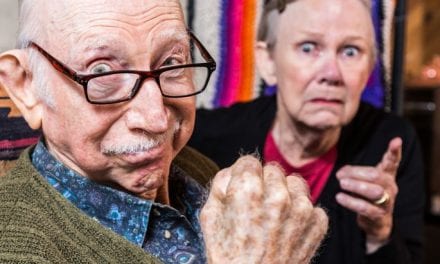More and more boomers would rather stay alone in their homes than to live communally in what seems to them increasingly like an institution – a gilded cage.
By Jack Cumming
For years the senior housing industry has talked about the coming Baby Boomer Generation. The expectation has been that there will be many more of them than the Greatest Generation but that they will be more demanding. Both expectations are true. There are more of them. They are more demanding. But, with exceptions, they aren’t coming to senior housing. They would rather stay alone in their homes than to live communally in what seems to them increasingly like an institution – a gilded cage.
The Gilded Cage
Those exceptions, though, the few younger people of retirement age who are still moving into independent residence in continuing care retirements communities (CCRCs, called Life Plan Communities by some) are beginning to make themselves heard. Some are pressing for legislative changes to give them a fairer voice in the decisions that affect their lives. As an example, residents in Washington State have recently formed a resident organization and have succeeded in getting that state’s first CCRC law enacted.
Others are turning to the courts and litigation. Residents in Palo Alto have brought a lawsuit to try to keep entry fee funds localized to meet the obligations for which they contracted. Residents elsewhere are considering litigation so that they can use the discovery process to require nonprofit providers to divulge confidential corporate information that would otherwise be withheld from residents. And residents in Oregon succeeded through litigation in restoring rights to residents over which the provider organization had claimed sole discretion.
What do residents want?
There are as many answers to that question as there are residents, but we can begin to generalize about a few complaints that are heard on CCRC campuses. First we hear, “They cajoled me into selling my home and giving them the proceeds so that they can own my new home in which I have no ownership and no voice.” A secondary cry is, “We were sold a vital, vigorous independent living community but the new residents they now entice to move in are old and non-communicative. The newbies are more decrepit at entry than are the original independent living residents who have aged in place.” Financially astute residents complain, “They implied that my entry fee would provide my care as I age but now I hear them say that ‘Cash is King and we have all this cash from entry fees.’ That’s my money they’re spending.”
As these complaints grow louder and are heard outside the walls of the CCRC, the voices of the existing residents are beginning to poison the marketplace. The children of residents pay attention to what they hear from their parents, and they don’t consider CCRC living as a desirable option for retirement. More and more one hears the children of residents – many themselves eligible to move in – viewing CCRCs as no more than high-priced assisted living. Meanwhile, many in the industry are living in a comfortable nonprofit bubble of self-congratulation, maintaining that they are mission oriented, unlike those greedy profit mongers. The bubble is shrinking, but those inside the bubble don’t seem to notice and don’t seem to want to know why it’s shrinking, much less make the changes that could ensure the continuance and growth of the industry.
Residents say they are happy, but . . .
For a resident, these observations are troubling. Residents have to wonder whether they made a mistake to move in. Most say they are happy, but . . . the building is lovely; the location is perfect; the food is great; but why are these overlords taking advantage of us. And many residents are afraid to voice their concerns for fear that reprisals may come in the form of withheld care, or unexpected ancillary charges or, in the extreme, eviction on the grounds that the provider believes the resident to need care beyond the limits of the provider’s license.
Residents give voice to their dissatisfaction in many ways. A resident recently pointed out that a formerly independent living community, which has embraced “aging in place” (in the special sense in which that term is used by CCRC managers), was not in his opinion compliant with the Americans with Disabilities Act because the doors to the Trash Rooms are hard to open. This could lead to a complicating enforcement action. The resident concluded his address to the Resident Council by summarizing, “They [the providers] have no record of being proactive; they are only defensive and reactive.”
Steps need to be taken.
The industry needs to address these concerns. Some steps can be easier to achieve than others. For instance, residents can be given ownership share recognition proportional to their entry fee investments or residents in tax exempt CCRCs can be made members in the nonprofit corporation. The alternative would be to hold full reserves against the contractual commitments for which the entry fees are part of the consideration. Other steps would be more difficult. For instance, assisted living apartments could be configured to be as large and as attractive as independent living residential units so that people would be more willing to move to an assisted living neighborhood where shared activities, camaraderie, and services are more accessible.
Unless the industry takes steps to make its offerings attractive to people who are just entering retirement, but who still consider themselves active and lively (people like the senior industry leaders themselves), it will spiral with increasing acceleration toward becoming no more than high acuity assisted living. That trend is already underway and it would take bold action by industry leaders to reverse the growing perception. Merely changing the name to Life Plan Community, or imagining that the public doesn’t understand the product so all that’s needed is a public relations campaign, will not be enough to stem the tide of communal living avoidance. Without bold action, the comfortable bubble will continue to shrink until it fades into insignificance.








